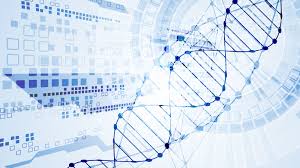
DNA Data Storage: The Future of Digital Archiving
The rapid growth of data generation has led to an unprecedented demand for efficient and sustainable storage solutions. DNA, the molecule that encodes genetic information, has emerged as a revolutionary medium for data storage due to its unparalleled density, durability, and longevity. DNA data storage offers a promising alternative to traditional digital storage methods, paving the way for the future of digital archiving.
Why DNA for Data Storage?
- Unmatched Data Density:
- A single gram of DNA can theoretically store 215 petabytes (215 million gigabytes) of data, far exceeding the capacity of current storage technologies.
- Durability:
- DNA is incredibly stable and can retain information for thousands of years under proper conditions, unlike magnetic tapes or hard drives that degrade over time.
- Longevity:
- DNA’s biological nature makes it resistant to obsolescence, ensuring that data stored in this medium can be accessed and decoded in the future.
- Sustainability:
- DNA storage reduces the environmental impact of energy-intensive data centers, as it requires minimal energy for maintenance.
How Does DNA Data Storage Work?
- Encoding Data:
- Digital information (binary code of 0s and 1s) is translated into the four nucleotide bases of DNA: adenine (A), cytosine (C), guanine (G), and thymine (T).
- Synthesis:
- The encoded data is synthesized into physical DNA strands using advanced chemical processes.
- Storage:
- The DNA is stored in tiny vials or on specially designed chips under controlled conditions to ensure stability.
- Retrieval:
- When needed, the DNA is sequenced to decode the stored information back into binary format.
Applications of DNA Data Storage
- Long-Term Archiving:
- DNA is ideal for preserving historical records, scientific research, and cultural artifacts for future generations.
- Big Data Solutions:
- Industries generating massive amounts of data, such as finance, healthcare, and scientific research, can leverage DNA storage for efficient data management.
- Data Backups:
- DNA’s durability makes it a reliable medium for critical data backups in disaster recovery systems.
- Space Exploration:
- DNA’s compact size and stability make it suitable for storing data on space missions where resources are limited.
Challenges in DNA Data Storage
- Cost:
- DNA synthesis and sequencing remain expensive, though advancements are steadily reducing costs.
- Speed:
- The processes of encoding and decoding data in DNA are currently slower than conventional methods.
- Error Rates:
- DNA synthesis and sequencing can introduce errors, requiring robust error-correction algorithms.
- Scalability:
- Transitioning from proof-of-concept experiments to industrial-scale applications requires significant technological advancements.
Future Directions
- Cost Reduction:
- Research into cheaper and faster DNA synthesis and sequencing technologies is critical for mainstream adoption.
- Automation:
- Developing automated systems for encoding, synthesizing, and retrieving data can streamline the DNA storage process.
- Hybrid Systems:
- Combining DNA storage with conventional technologies can create hybrid systems that balance speed, cost, and capacity.
- Standardization:
- Establishing industry standards for DNA data storage will facilitate compatibility and interoperability.
Conclusion
DNA data storage represents a groundbreaking leap in digital archiving, offering unparalleled density, durability, and sustainability. While challenges like cost and scalability remain, ongoing innovations in biotechnology and nanotechnology promise to make DNA storage a viable solution for the growing data needs of the future. As research and development continue, DNA’s potential to revolutionize the way we store and manage information becomes increasingly clear.
